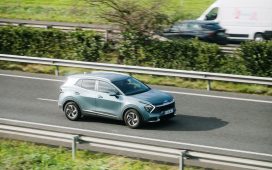At last, Australia’s federal and state governments are taking action on climate change, with a suite of carbon emissions-reduction policies. But when it comes to cars, we don’t need an array of costly policies, just one good one. And unfortunately, the one policy that would do this job the best – an emissions ceiling – is missing.
Reducing carbon emissions from cars, utes, and SUVs is essential because they contribute about 11% of Australia’s annual emissions. Governments are on the job. They have introduced a range of policies designed to encourage drivers to make the switch from petrol and diesel vehicles to electric and low-emissions vehicles. The policies include state-based subsidies and registration discounts, excise tax discounts on lower-emitting fuels, and a fringe benefits tax (FBT) exemption for electric vehicles (EVs).
But this patchwork of policies is a costly way to reduce light-vehicle emissions.
The most costly of these is the federal government’s FBT exemption for electric vehicles, effective from July last year. The Productivity Commission estimates the exemption costs at least $905 per tonne of carbon emissions abated.
This is exorbitant compared to other state and federal policies. Other policies, including the $3,000-or-more EV subsidies available in most states, and discounts on ethanol and biodiesel excises, cost less than a quarter of this for each tonne of carbon emissions abated.
And the most effective policy of all would cost even less: an emissions ceiling on light vehicles would come at a negligible cost to taxpayers.
Not only is the FBT exemption expensive, but tampering with FBT further undermines an important element of our tax system.
FBT was introduced in Australia in 1986 as a tax system integrity measure. The aim is to ensure that people cannot avoid paying tax by receiving part of their salary in in-kind benefits, such as a company car, instead of cash. But over time, various special deals have crept in, leaving the incoherent FBT mess we face today.
Carve-outs such as the exemption for EVs further undermine the integrity of the tax system, by letting some – but not all – employees take some of their salary in the form of a tax-free car.
The FBT arrangements for cars were already generous. The statutory method that most people use to value car benefits for FBT applies at a flat rate of 20% of the purchase price of the car, no matter how much or little you drive. This can result in a lower tax burden if you receive a car from your employer than if you received your income in cash. Not only does this undermine the integrity of the system, it encourages more driving.
Now the federal government has gone even further, removing FBT entirely for electric vehicles. While it is better for the environment for any given trip to be made in an EV than in a petrol or diesel vehicle, all driving comes with costs, including accidents, congestion, and an ever-increasing demand for roads and parking.
Some people say government intervention is needed because EVs are expensive and hard to find in Australia. Those people are right about the problems, but wrong about the causes. The shortage of EVs in Australia is primarily caused by a shortage of supply, not of demand. Wait times for Teslas reached up to 12 months last year, and Hyundai’s release of electric SUVs sold out in less than seven minutes.
Instead of the growing potpourri of well-meaning policies to cut car emissions, Australia should introduce an emissions ceiling for new light vehicles, just like 80% of the rest of the world has already. It’s a proven way to reduce emissions and increase the supply of EVs, without dictating to anybody the kind of car they can drive. And, best of all, it comes at negligible cost to the taxpayer.
An emissions ceiling imposes a limit on the amount of emissions allowed from new light vehicles sold each year. The amount allowed under the ceiling would ratchet down each year, until it reached zero in 2035, to allow time for petrol and diesel vehicles to be mostly off our roads by 2050, when Australia aims to be at net zero emissions.
EVs cost more to buy than similar-sized petrol or diesel vehicles at present, but they cost less to run. So much so that the Grattan Institute calculates that under an emissions ceiling, drivers who bought a zero- or low-emissions car instead of a petrol or diesel car would be $900 ahead five years later.
And there is no reason to fear such a policy would “end the weekend”: imposing an emissions ceiling would lead to Australia having a steadier supply and wider range of zero- and low-emissions vehicles, without prohibiting any vehicle types, including emissions-belching utes and hot rods.
Australia’s governments should be commended for finally getting serious about cutting emissions. But when it comes to cars, they haven’t yet landed on the best policy. We need an emissions ceiling.










